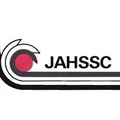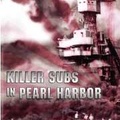Almost twenty years ago, on January 15, 1985, a steel container, 4 feet high and 18 inches in diameter, was buried beneath a tree fronting the George and Sakaye Aratani Japan America Theater at the Japanese American Cultural and Community Center. The tiny plaque marking the spot where this Little Tokyo Centennial Time Capsule is today is no longer there, having been removed for safekeeping. Some have noticed bronze plates were pulled off the other sites within J-town.
Perhaps, as each decade looms, the Nikkei community should be reminded that there is a time capsule containing a variety of memorabilia gathered by the Little Tokyo Centennial Committee during the year, 1984, when Little Tokyo celebrated its centennial.
Every time I meet Frank K. Omatsu somewhere (the last times were at the Japanese American National Museum where he is one of the amiable Friday docents), I remember he chaired the capsule project (it was his idea and naturally, but unexpectedly, it was his). Now, the Japanese American Historical Society of Southern California can be the “organization of record,” through Nanka Nikkei Voices, to inform another generation of this historic deposit.
There will be further opportunities for more organizations “of record” to remember the Little Tokyo time capsule since the intention to reopen it is 2084. And what will they find?

1985: Mayor Tom Bradley participates at burial ceremony of the Little Tokyo Centennial Time Capsule at the JACCC Noguchi Plaza.
1. A videotape cassette from Tritia Toyota of KNBC News 4 on “Asian Americans in Los Angeles.” One wondered whether the videotape would hold up. Nitrogen gas was piped in a preservative for all the contents. But there’s no recorder to play back the tape.
2. Souvenir booklets: Nisei Week Festival, the 1984 Centennial, Kango Kunitsugu’s 1964 Redevelopment proposal, the 1954 JACL Convention at Los Angeles.
3. Magazines, newspaper clippings, holiday issues from the local newspapers.
4. Books
5. The Los Angeles Bicentennial (1781 – 1981) commemorative coin.
6. Seeds from the estimated 100-year-old grapefruit tree still yielding fruit in Noguchi Plaza (plus one tennis-ball size grapefruit).
7. Old leaden newspaper name plates, since replaced by cold-type or film negative.
8. Samples of bank statements.
9. Forms used at City View Hospital (previously the Japanese Hospital).
10. Bulletins from the local Japanese churches.
11. Individual business cards (plus 5 donation to defray the cost of the time capsule burial).
12. A statuette, designed by prize-winning ceramist, Kazuko Kayasuga Mathews, which was presented in 1984 to 30 living persons who contributed substantially to the growth of Little Tokyo. They are (*Nisei):
*Judge John F. Aiso; Takio Fukawa (JBA president); *Willie M. Funakoshi (chronicler of Nisei Week Festivals since its beginning in 1934); Misao Hirohata (one of the early businesswomen); *Kenji Ito, Esq. (longtime attorney-at-law); Frank E. Kagiwada (Issei pioneer YMCA worker); *Bruce T. Kaji (savings and loan developer); Toyosaburo Katayama (print shop pioneer), Dr. William M. Kato (l931 USC Dentistry graduate); *Masashi Kawaguchi (frozen seafood entrepreneur).
Yukata Kubota (kendo Renmei Founder);Aiba S. Kurihara (organized Japanese gardeners); Hajime Matsumoto (the koi, Japanese carp, expert); *Akemi Miyake (fund raiser for a myriad of community projects); *Dr. Roy Nishikawa (longtime JACL leader); *John Nishizu (Little Tokyo Lions Club founder); *Mac Sasaki (So. Calif. Gardeners Federation Officer); Mitsuhiko Shimizu (the conscience of Little Tokyo businessmen since 1921); *Marjorie Shinno (Friends of Little Tokyo Arts leader); Saku Shirakawa (Nikkei Fujinkai pioneer).
Kakuo Tanaka (stalwart with Koyasan, Kyodo System, Japan America Society, JACCC, Urasenke Tea, Japanese Chamber of Commerce, etc); *Togo W. Tanaka (for leadership in fields often removed from the Japanese community); *Rev. Howard N. Toriumi (his impetus for Little Tokyo Redeveolpment, Pioneer Center); Rokuro Watanabe (Issei pioneer of San Fernando Valley); Tozo Yahata (Little Tokyo businessman and fund raiser for community affairs); Hodo Yamaguchi (premier shakuhachi instructor in Southern California); *Takito Yamaguma (early employee of Bank of Tokyo, Omotosenke Domonkai leader); *Harry Yamamoto (tireless volunteer, Koyasan Boy Scouts, Nisei Week and Nisei veterans); Rev. Kenko Yamashita (bishop of Zenshuji Soto Mission); Father John M. Yamazaki (100 years old, pastor of St. Mary’s Episcopal Church, founder of Shonien Children’s Home).
* This article was originally published in Nanka Nikkei Voices: Little Tokyo: Changing Times, Changing Faces (Volume 3) in 2004. It may not be reprinted or copied or quoted without permission from Japanese American Historical Society of Southern California.
© 2004 Harry K. Honda





